B) 8 - 10 = ?
C) -6 + 4 = ?
D) -5 - 4 = ?
A) -7
B) -2
C) -2
D) -9
SOLVE:
x + 5 = -5
x = -10
Graph x < 6.

GRAPH:
A) (0, 4)
B) (-2, 0)
C) (-5, 1)
D) (4, -3)
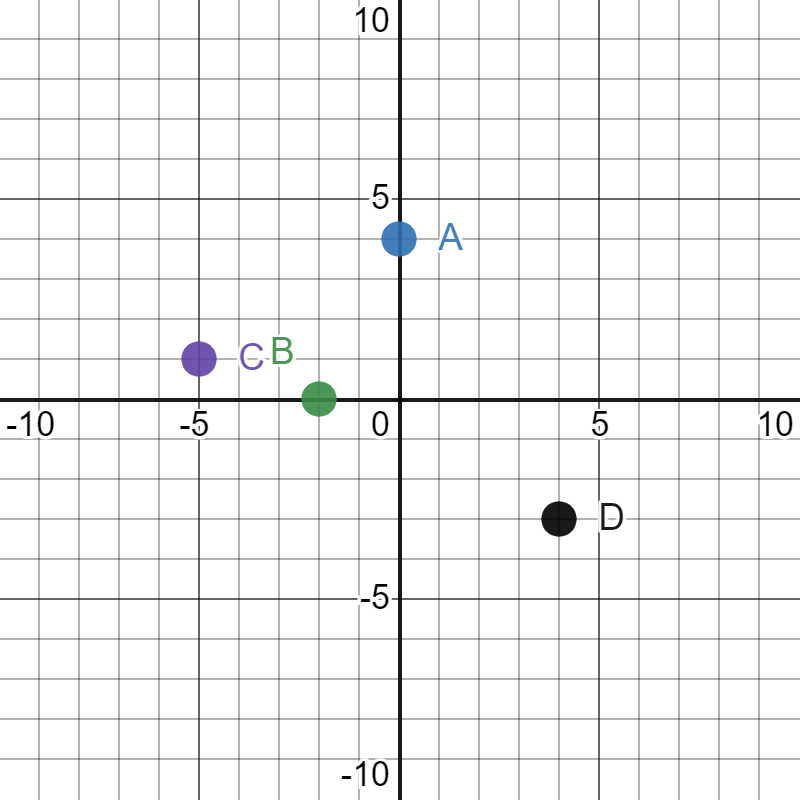
Find the slope of the line that passes through (3, 6) and (-2, 4).
slope = m = (4 - 6) / (-2 - 3)
m = -2 / -5 = 2/5
COMBINE LIKE TERMS:
2x2 - 3x + 7 – 3x2 + 4x – 7
-x2 + x
SOLVE:
2x - 3 = 17
2x - 3 = 17
2x = 20
x = 10
Write the inequality that is represented by the graph.

x >/= -1
1) What is the DOMAIN & RANGE FOR THE RELATION?2) MAP THE RELATION:
{(-2, 3), {4, 5), (6, -5), (-2, 5)}
DOMAIN = {-2, 4, 6}
RANGE = {-5, 3, 5}
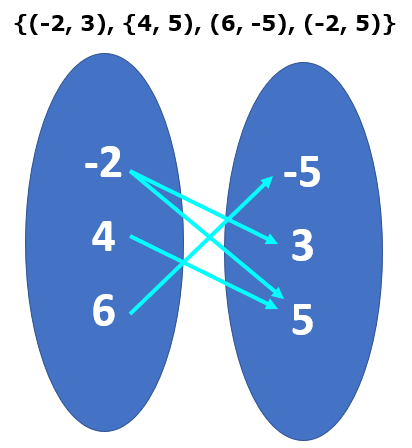
Find the slope of the line:
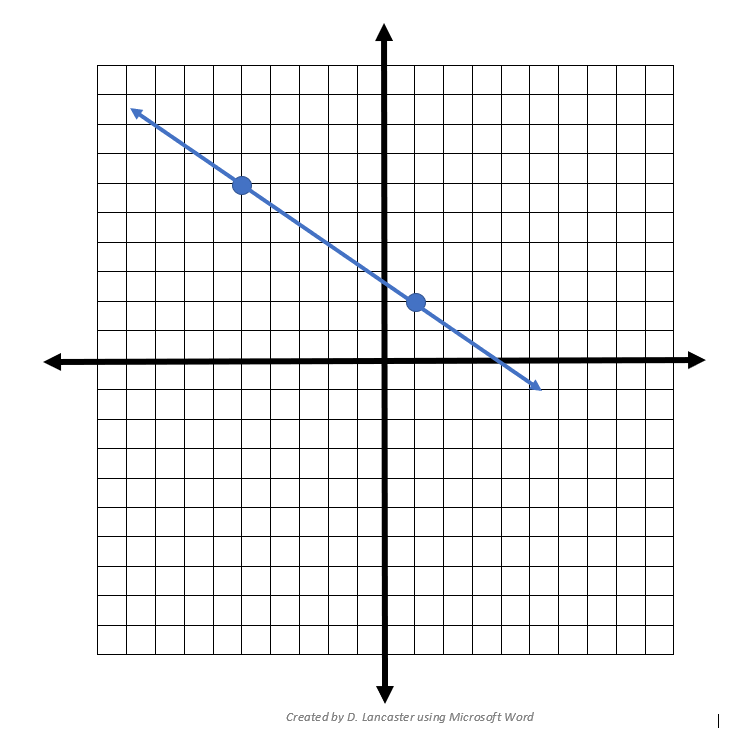
SLOPE = RISE / RUN = 4 / -6
4/-6 = -2/3
Find the solution to the system of equations BY JUST LOOKING AT THE EQUATIONS!
y = 3x - 2
y = 3x + 5
SAME SLOPE! PARALLEL LINES! NO SOLUTION!
Simplify using the Order of Operations:
7 + (6 × 52 + 3)
7 + (6 × 52 + 3)
7 + (6 x 25 + 3)
7 + (150 + 3)
7 + 153
160
SOLVE:
2(x + 4) = 8
2(x + 4) = 8
2x + 8 = 8
2x = 0
x = 0
You flip the inequality symbol when you multiply or divide by a negative to get the variable by itself.
IS THE RELATION A FUNCTION?
{(-3, 4), (-1, 0), (2, 4), (3, 0)}
Yes, the relation is a function because the x-values DO NOT repeat.
What is the slope and y-intercept of the line y = -3x - 5?
slope = m = -3
y - intercept = b = -5
Find the solution to the system by GRAPHING:
-2x - 3y = -7
y = 6x - 11
(2, 1)
Remember...you don't even have to solve for y when you use Desmos!
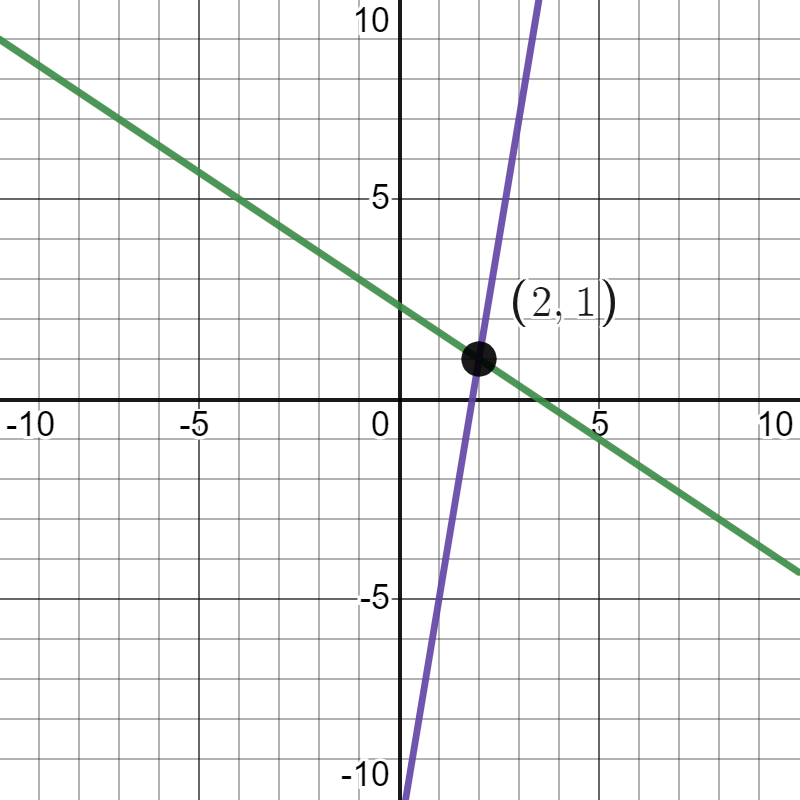
Distribute:
4(xy - 3y)
4xy - 12y
SOLVE:
3(x + 1) - x + 4 = 3
3(x + 1) - x + 4 = 3
3x + 3 - x + 4 = 3
2x + 7 = 3
2x = -4
x = -2
SOLVE:
x/3 - 1 > 2
x/3 - 1 > 2
x/3 > 3
x > 9
Is the relation a function?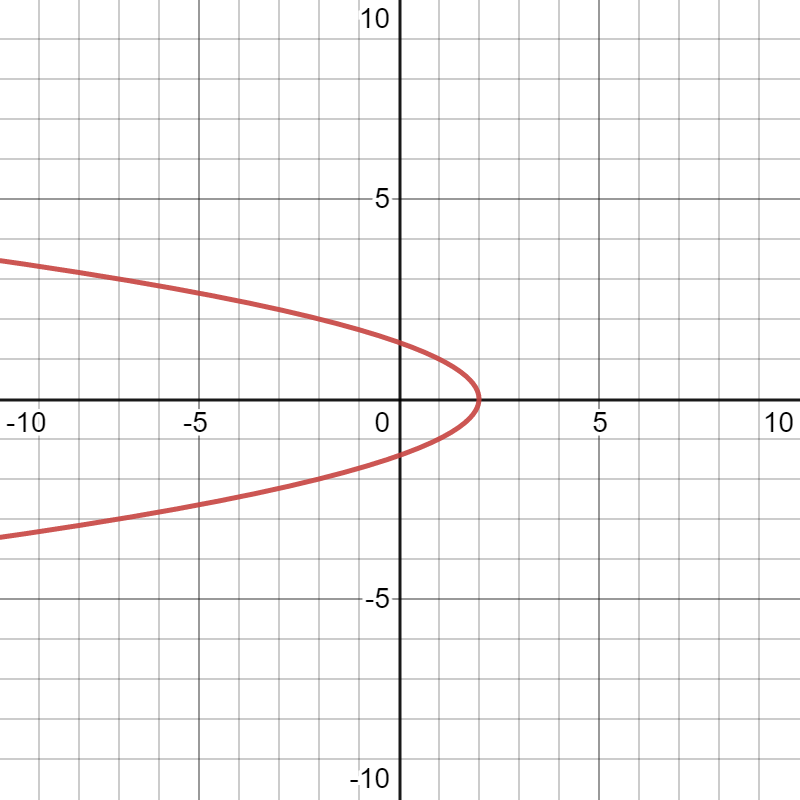
The relation is NOT a function because it does not pass the vertical line test.
Find the equation of the line:
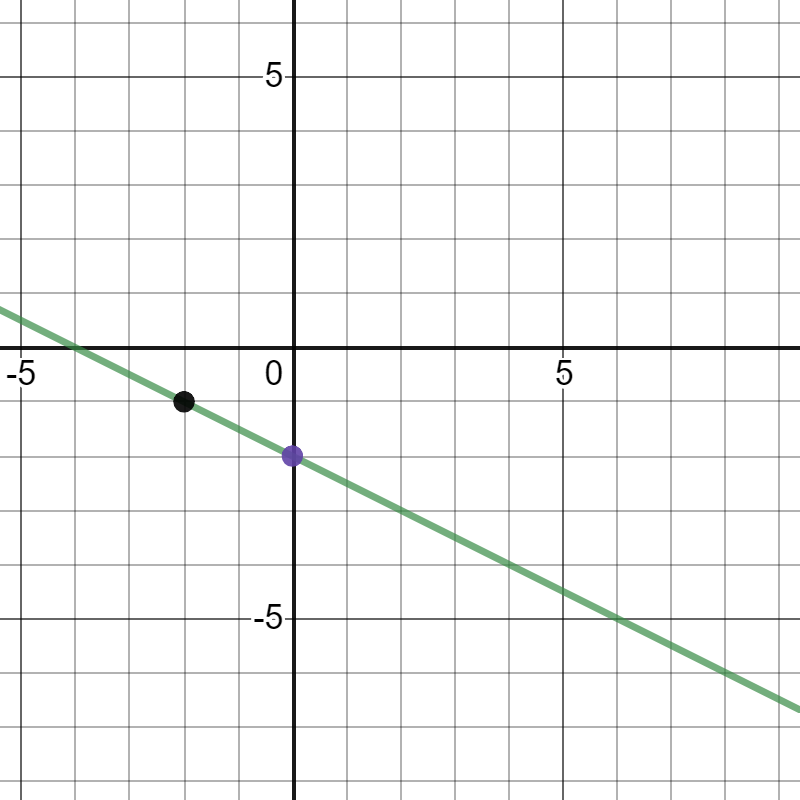
Find the solution to the system by SUBSTITUTION:
2x − 3y = −1
y = x − 1
2x - 3(x - 1) = -1
2x - 3x + 3 = -1
-x + 3 = -1
-x = -4
x = 4
**********************
Replace "x" with "4" in either equation to find "y"!
y = x - 1
y = 4 - 1
y = 3
SOLUTION: (4, 3)
A) (3x2)(-2x) = ?
B) (15x5) / (3x2) = ?
C) (2b2)3 = ?
D) (2x5)0 = ?
B) 5x3
C) 8b6
D) 1
SOLVE:
5x + 3 = 3x - 9
5x + 3 = 3x - 9
2x + 3 = -9
2x = -12
x = -6
SOLVE:
-5x - 4 > 6
-5x - 4 > 6
-5x > 10
x < -2
EVALUATE:
f(3) for f(x) = 2x2 + 1
f(3) for f(x) = 2x2 + 1
f(3) = 2(3)2 + 1
f(3) = 2(9) + 1
f(3) = 18 + 1
f(3) = 19
Find the common difference and the explicit formula for the arithmetic sequence below. Use the formula to find the 25th term.
-8, -2, 4, 10, ...
d = 6
An = A1 + (n - 1)d
An = -8 + (n - 1)6
An =-8 + 6n - 6
An =6n - 14
*********************
A25 = 6(25) - 14
A25 = 6(25) - 14
A25 = 150 - 14
A25 = 136
Find the solution to the system by ELIMINATION:
−4x + y = 6
−5x − y = 21
−4x + y = 6
−5x − y = 21
ADD THE TWO EQUATIONS TO GET:
-9x = 27
x = -3
********************
Replace "x" with "-3" in either equation to find "y"!
-4x + y = 6
-4(-3) + y = 6
12 + y = 6
y = -6
SOLUTION: (3, -6)